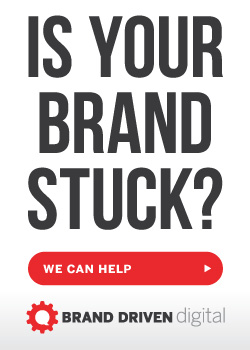We’re all guilty of it. We spend hours writing and obsessing over every word in our blog posts, newsletters, and press releases and then quickly wrap things up with the headline. Unfortunately, according to the “Father of Advertising” David Ogilvy, only one in five readers will make it past the headline into your copy. So, how can you write more compelling marketing headlines?
In today’s fast-paced world, we have shorter attention spans and a wealth of entertainment and distractions begging for that attention. To be exact, 2 million blogs posts, 294 billion emails, 864,000 hours of video and 400 million tweets are pushed out daily according to Conductor. It’s no wonder it can be a challenge to have your voice heard. My advice – start with a compelling headline to stand apart from the competition.
Here are five of my favorite strategies for writing more compelling marketing headlines:
1. Don’t Bury the Lead
Your headline is the first, and perhaps only, chance you have to make an impression on a prospective reader. If you don’t grab the audience’s attention from the start, it may prevent them from ever getting to the best part of your article.
Recently, I saw a news release in a local paper that inspired me to write this article. The organization donated thousands of dollars to charity through funds raised by a company event, yet the title failed to reflect that. Instead, the headline focused on the company event, location, and attendees. The headline should have been the most significant aspect of the event, which was the amount donated to charity.
2. Know Your Audience
Who are you communicating with? Do you know the demographics and interests of your audience? This is key to provide information that is relevant and useful to them. The headline and content should speak to the reader’s needs, wants, and wishes. Capture their attention by providing information that they care about or that can help them moving forward. Communicating with a 25-year old male is completely different than a 25-year old female. Tap into the resources and knowledge you have regarding your audience and pay attention to it.
The same is true for placement. Will this be used as a news release or a blog post? How formal or casual does the tone need to be? Do I want the media to pick this up for tomorrow’s paper? All of these details will help you engage the right audience for your communication.
3. Use Lists, Tips, and Tricks
It may seem over-used but breaking things down for the reader enables them to process and recall information. It’s less daunting than reading copy-heavy newsletters and articles and engages the audience by promising knowledge that they may not currently have. There is a reward or payoff at the end, which is ultimately the goal of reading any content.
4. Use Trigger Words or Numbers
A trigger word is a word that initiates a process or course of action. For example, you may choose to utilize “why” or “how” to persuade or enable someone. Keep in mind, the words we use also have distinct connotations. Always be aware of the emotional response they evoke and utilize that to move your audience before they read the first sentence of your copy.
5. Be Clear and Concise
Though clever headlines are entertaining for those who are in on the joke, they can also create ambiguity and confusion for others who are left out. If you truly want additional coverage and readership, be sure you don’t leave people wondering about the topic of your article. Remember, you’re competing with billions of online content options. If the audience has to stop and think about the meaning or research your headline, chances are they won’t read any further. I’m not promoting the absence of wit, but I would recommend engagement being your top priority, utilizing your sense of humor later on throughout the article, if applicable.
Those are five of my favorite headline strategies. What are some of yours? Feel free to share them in the comments below.









